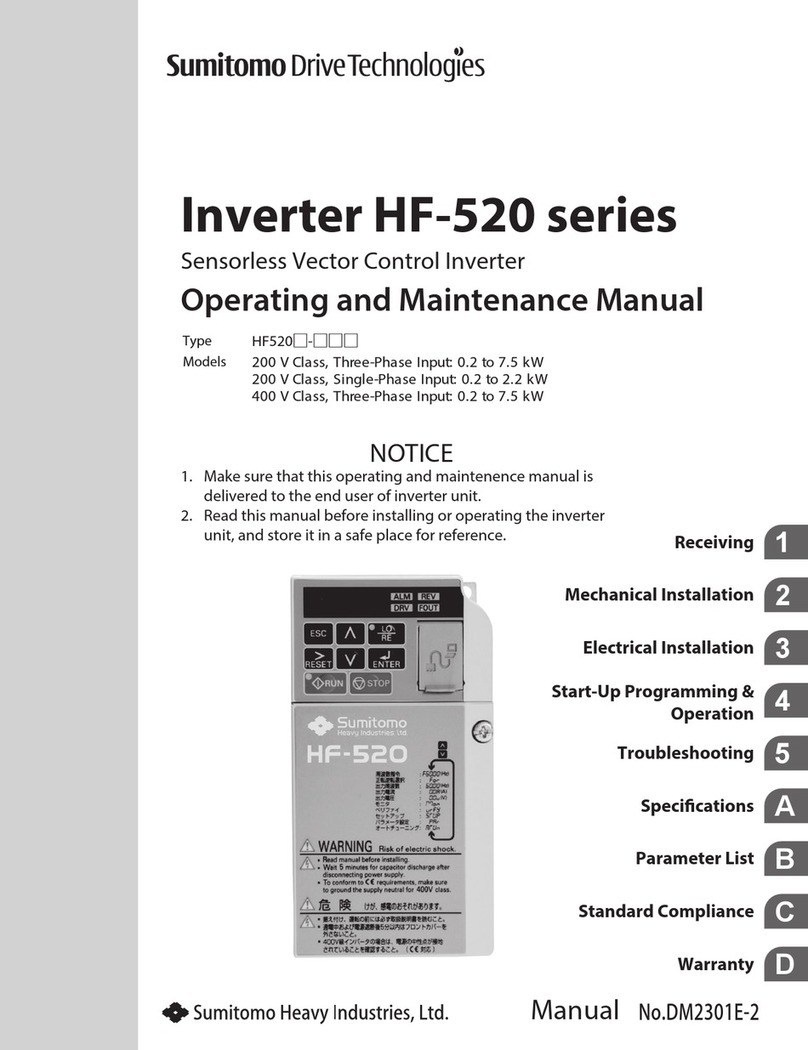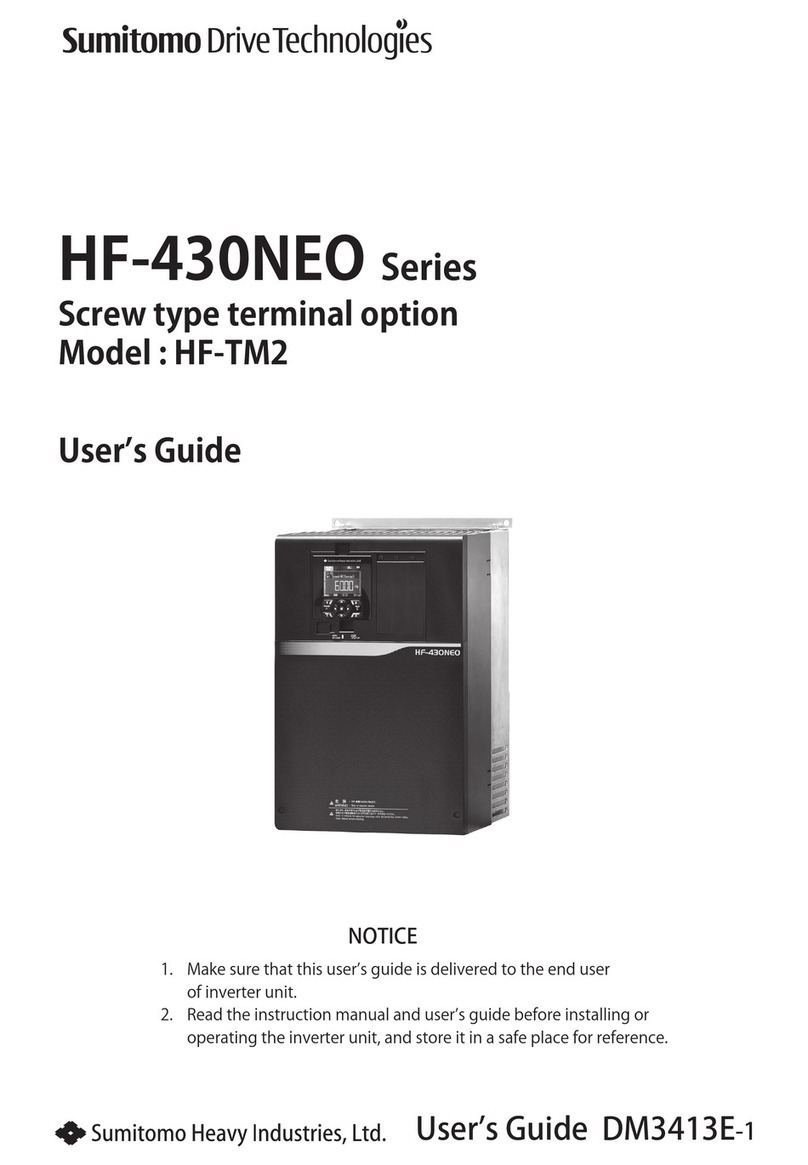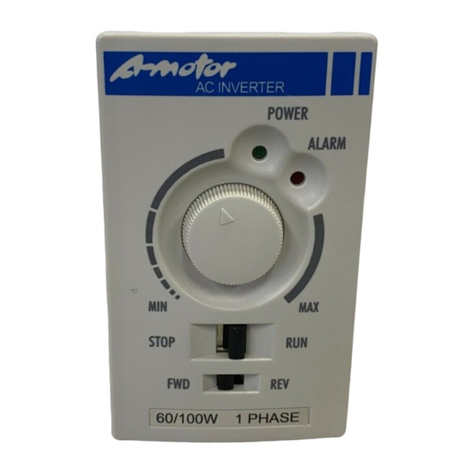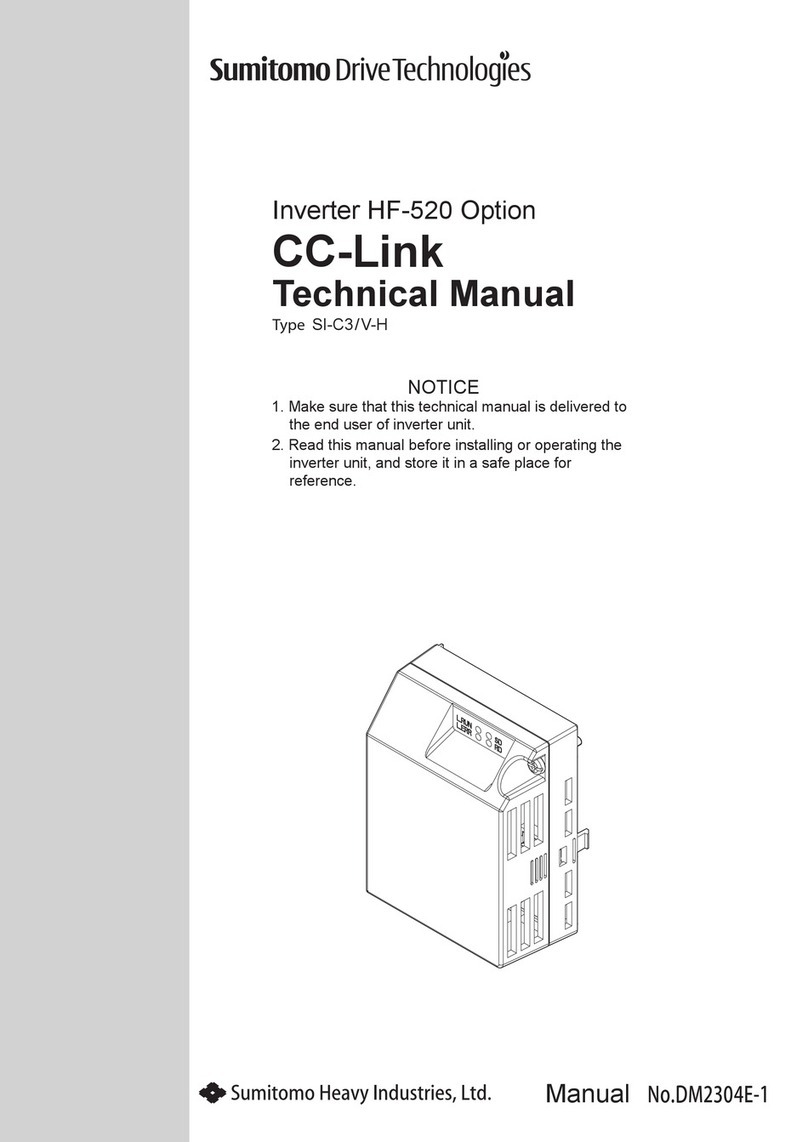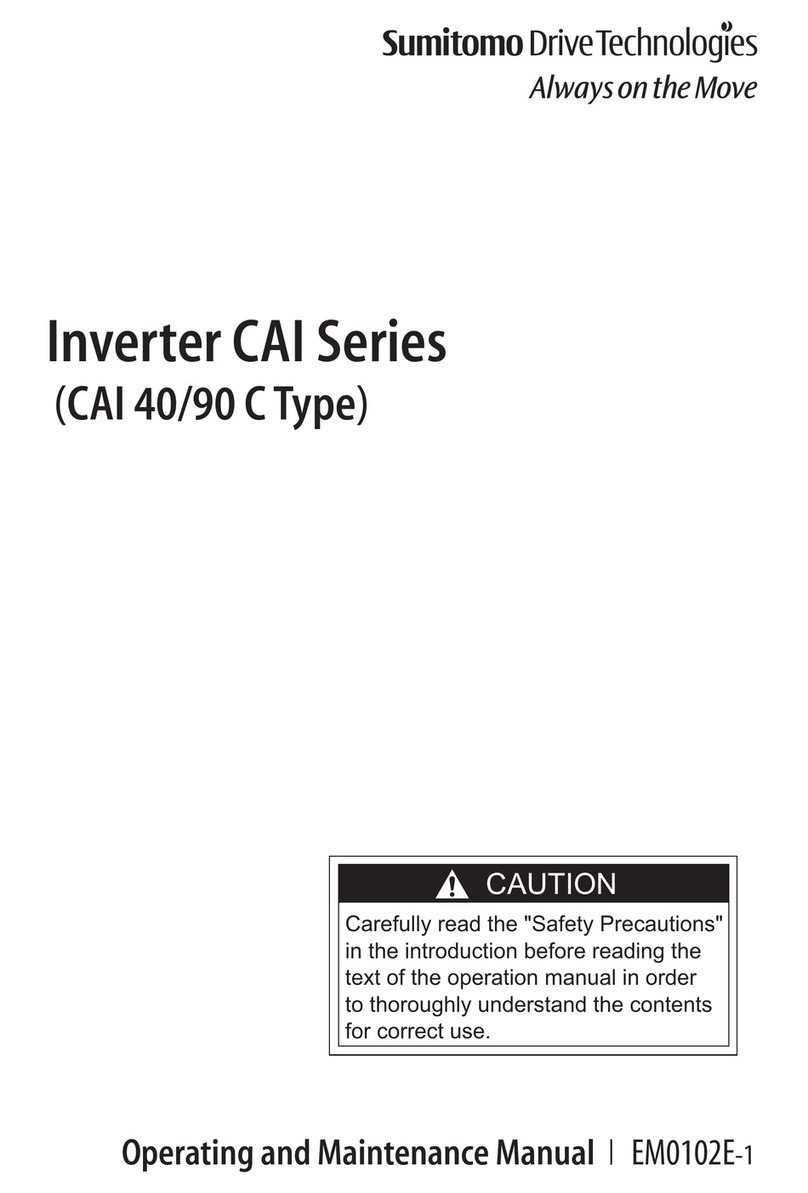4
List of Functions
Initial setting
Monitor/setting RangeFunctionCodeSFHF
DC Braking
Upper/Lower limiter,
jump frequency
PID ControlAVR
Acceleration/Deceleration
function
00: Invalid
01: Valid
●●A52 DC braking frequency setting 0.00–10.0Hz 0.5
●●A53 DC braking output delay time setting 0.00–5s 0.0
●●A54 DC braking power setting 0–100% 0
●●A55 DC braking time setting 0.0–60s 0.0
●●A61 Frequency upper limit setting 0.0–360Hz 0.0Hz
●●A62 Frequency lower limit setting 0.0–360Hz 0.0Hz
●●A63 Jump frequency setting 1 0.0–360Hz 0.0Hz
●●A64 Jump frequency width setting 1 0.0–10Hz 0.5Hz
●●A65 Jump frequency setting 2 0.0–360Hz 0.0Hz
●●A66 Jump frequency width setting 2 0.0–10Hz 0.5Hz
●●A67 Jump frequency setting 3 0.0–360Hz 0.0Hz
●●A68 Jump frequency width setting 3 0.0–10Hz 0.5Hz
00: Without PID control
01: With PID control
●●A72 P gain setting 0.2–5 times 1.0
●●A73 I gain setting 0.0–150s 1.0
●●A74 D gain setting 0.0–100s 0.0
●●A75 PID scale rate setting 0.01–99.9 1.0
00: IRF terminal (Current input)
01: VRF terminal (Voltage input)
00: ON
●●A81 AVR function selection 01: OFF 02
02: OFF at deceleration
200/220/230/240 200V class
380/400/415/440/460 400V class
●●A92 Second acceleration time setting 0.1–3,000S 15.0S
●●A93 Second deceleration time setting 0.1–3,000S 15.0S
00:
External contact signal (2
nd
acceleration/deceleration terminal)
01: Preset frequency
●●A95 Acceleration switching frequency 0–360Hz 0Hz
●●A96 Deceleration switching frequency 0–360Hz 0Hz
00: Linear
01: S-curve
00: Linear
01: S-curve
Expanded Function H (HF–320 Sensorless Vector Control Tuning function)(Note 1)
Sensorless Vector Control
Motor Constant
Auto Tuning
Motor Constant
0: Without auto tuning
H01 Auto tuning mode selection 1: With auto tuning 0
2: Measurement of resistance and inductance
0: Standard motor
H02 Motor data selection 1: AF motor (Inverter motor) 0
2: Auto tuning data (H30–H34 selection)
H03 Motor capacity 0.1/0.2/0.4/0.75/1.5/2.2/3.7/5.5/7.5 (kW) (Note 2)
H04 Motor poles 2/4/6/8 4
H05
Speed control response constant setting
0–99 Equivalent to 10 mec per set value of 1 20
H06
Motor stabilization constant setting
0–255% 100
H20 Motor constant R1 setting 0–0.999,1.00–9.99,10.0–65.5 Unit: Ω(Note 3)
H21 Motor constant R2 setting 0–0.999,1.00–9.99,10.0–65.5 Unit: Ω(Note 3)
H22 Motor constant L setting 0–0.999,1.00–9.99,10.0–65.5 Unit: mH (Note 3)
H23 Motor constant Io setting 0–0.999,1.00–9.99,10.0–65.5 Unit: A (Note 3)
Ratio to the single inertia of a motor with the same kW as the inverter
Ratio to the single inertia of a motor with the same kW as the inverter
0–0.999,1000 Unit: %
0–0.999,1000 Unit: %
H30 Motor constant R1 setting 0.–0.999,1.00–9.99,10.0–65.5 Unit: Ω(Note 3)
H31 Motor constant R2 setting 0.–0.999,1.00–9.99,10.0–65.5 Unit: Ω(Note 3)
H32 Motor constant L setting 0.–0.999,1.00–9.99,10.0–65.5 Unit: Ω(Note 3)
H33 Motor constant Io setting 0.–0.999,1.00–9.99,10.0–65.5 Unit: mH (Note 3)
Function Setting Range
Initial setting
Code
2.0
2.0
Inertia settingH24
H24 Inertia setting
(Note 1) SF-320 Series have no H parameter.
(Note 2) The same capacity as the inverter (Note 3) Data on SUMITOMO standard motors with the same capacity as the
inverter
●●A51 DC braking function selection
●●A71 Selection of PID function
●●A76 Feedback input method setting
●●A82 Motor input voltage setting
●●A94
Second acceleration/deceleration switching method
●●A97 Acceleration pattern selection
●●A98 Deceleration pattern selection
00
00
00
200/400
00
00
00
Common
